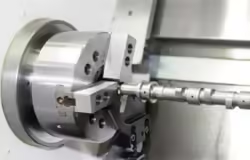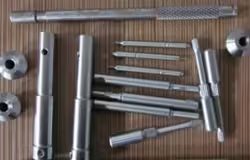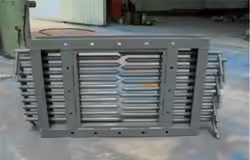
Mechanical Steel Tubing: A Complete Guide to Materials, Processes, and Applications
Table of Contents
Introduction
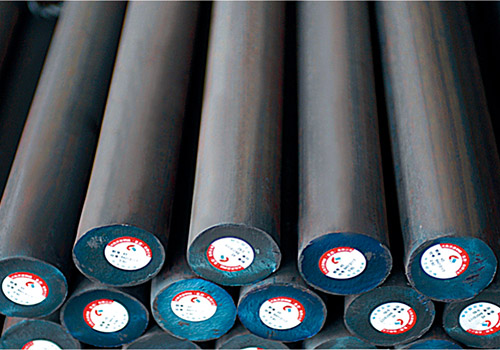
Concept and Definition
Mechanical steel tubing refers to steel tubes specifically engineered for mechanical, structural, and industrial applications. They are designed to handle mechanical loads, provide structural support, and ensure dimensional precision. These tubes can be thick-walled or thin-walled, seamless or welded, and often require high accuracy to meet engineering specifications.
Importance in Industry
Mechanical steel tubing plays a crucial role in modern engineering. It is widely used in:
- Structural support systems
- Hydraulic and pneumatic cylinders
- Drive shafts and mechanical components
Its combination of strength, durability, and precision makes it irreplaceable in many industrial applications.
Market Overview
The global mechanical steel tubing market has been steadily growing due to increasing demand in automotive, construction, and energy sectors. In China, advances in steel production technology and rising infrastructure investments have accelerated the adoption of high-performance mechanical tubing.
Types of Mechanical Steel Tubing
Classification by Manufacturing Process
Seamless Tubing
Seamless mechanical steel tubing is manufactured without a welded seam. This process provides uniform strength, better resistance to pressure, and superior fatigue performance. It is ideal for high-stress and critical applications.
Welded Tubing
Welded tubing is formed by rolling steel strips and welding along the seam. While slightly less uniform than seamless tubing, welded tubes are more economical and suitable for applications where extreme pressure resistance is not required.
Classification by Material
Carbon Steel Tubing
Carbon steel tubing is cost-effective and provides sufficient strength for general industrial and structural purposes.
Alloy Steel Tubing
Alloy steel tubing contains elements such as chromium, nickel, or molybdenum, enhancing corrosion resistance, mechanical strength, and wear resistance, making it ideal for demanding environments.
Classification by Performance and Application
| Type | Characteristics | Typical Applications |
|---|---|---|
| High-Strength Tubing | Can withstand high mechanical loads | Automotive frames, machinery |
| Wear-Resistant Tubing | Surface hardened, durable | Mining equipment, industrial rollers |
| Corrosion-Resistant Tubing | Alloyed or coated for chemical resistance | Marine structures, chemical plants |
Material Composition & Properties
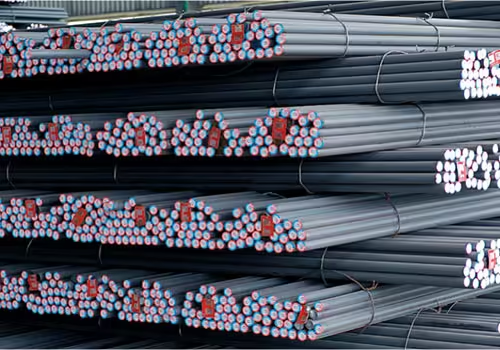
Carbon Steel vs Alloy Steel
- Carbon steel provides a cost-effective solution for standard applications.
- Alloy steel includes additional elements to enhance mechanical properties, corrosion resistance, and high-temperature performance.
Key Alloying Elements and Their Effects
- Chromium (Cr): Increases hardness and corrosion resistance
- Nickel (Ni): Enhances ductility and toughness
- Molybdenum (Mo): Improves high-temperature strength
- Vanadium (V): Refines grain structure, increasing strength
- Silicon (Si): Provides oxidation resistance
Mechanical Properties
Mechanical steel tubing is evaluated based on:
- Tensile strength – resistance to being pulled apart
- Yield strength – stress level at which permanent deformation occurs
- Hardness – resistance to indentation or wear
- Impact toughness – ability to absorb energy without fracturing
- Wear resistance – surface durability against abrasion
Standards and Specifications
Mechanical steel tubing must comply with industry standards such as ASTM, EN, GB, and ISO, ensuring uniformity and reliability for engineering applications.
Manufacturing & Processing
Raw Material Selection
Steel billets, coils, or slabs are selected based on required strength, thickness, and end-use application.
Forming Methods
- Hot Rolling: Tubes are formed at high temperatures, providing ductility and toughness.
- Cold Drawing: Improves dimensional accuracy, surface finish, and mechanical properties.
- Extrusion: Used for high-precision applications requiring complex cross-sections.
Seamless vs Welded Tubing Process
- Seamless tubes are pierced and stretched from solid billets.
- Welded tubes are rolled and welded along the seam using high-frequency or electric resistance welding.
Heat Treatment
Processes such as annealing, normalizing, quenching, and tempering are applied to optimize strength, hardness, and ductility according to application requirements.
Surface Treatment
- Anti-corrosion coatings, galvanizing, or polishing enhance durability and protect against environmental damage.
Quality Control
Mechanical steel tubing undergoes:
- Dimensional checks
- Non-destructive testing (ultrasonic, radiographic, or magnetic)
- Mechanical property tests (tensile, hardness, impact)
Applications of Mechanical Steel Tubing
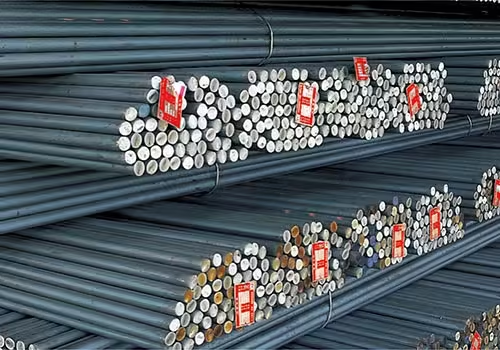
Mechanical and Industrial Equipment
Used in hydraulic cylinders, structural supports, and machine frames, where strength and precision are critical.
Automotive Industry
Mechanical tubing forms chassis components, suspension parts, and drive shafts, providing lightweight strength and high fatigue resistance.
Energy and Industrial Piping
Boiler tubes, heat exchanger tubes, and pipeline supports benefit from the high-pressure and high-temperature performance of mechanical tubing.
Construction and Structural Applications
Tubing is used in load-bearing frameworks, scaffolding, and temporary supports due to its high strength-to-weight ratio.
Aerospace and High-Performance Engineering
Lightweight and high-strength tubing is critical in aircraft components, precision machinery, and defense equipment.
Quality Control & Standards
Domestic Standards
- GB/T 3091 – Steel pipes for mechanical and structural use
- GB/T 8162 – Seamless steel tubes for structural applications
International Standards
- ASTM A500 – Cold-formed welded and seamless structural tubing
- EN 10305 – Seamless and welded precision tubes
Inspection Methods
- Ultrasonic and radiographic testing for internal defects
- Hydraulic pressure tests for strength
- Hardness and tensile testing for mechanical properties
Traceability System
- Batch tracking, material certification, and factory inspection reports ensure reliability and compliance.
Comparison & Selection Guide
Mechanical Steel Tubing vs Standard Steel Pipe
- Mechanical tubing: precision, high strength, structural integrity
- Standard pipe: primarily for fluid transport, lower dimensional accuracy
Seamless vs Welded Tubing
- Seamless: high uniformity, pressure-resistant
- Welded: cost-effective, suitable for moderate-pressure applications
Carbon Steel vs Alloy Steel Tubing
- Carbon steel: economical, sufficient for general applications
- Alloy steel: better for corrosive, high-temperature, or heavy-duty environments
Thick-Wall vs Thin-Wall Tubing
- Thick-wall: higher load-bearing capacity, heavier
- Thin-wall: lightweight, cost-efficient, for moderate loads
Future Trends & Innovations
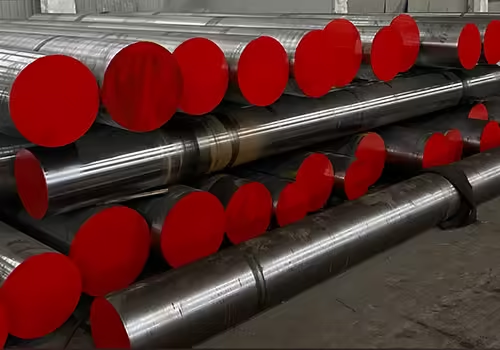
High-Precision Manufacturing
Automation, CNC cold drawing, and intelligent quality monitoring improve accuracy and repeatability.
Lightweight, High-Strength Materials
Development of low-alloy and high-strength steels allows weight reduction without sacrificing performance.
Advanced Surface Treatments
Coatings, galvanizing, and wear-resistant treatments enhance durability in harsh conditions.
Sustainable Manufacturing
Recycling steel, reducing energy consumption, and using eco-friendly processes support green production.
Conclusion
Mechanical steel tubing is a cornerstone of modern engineering, offering unmatched strength, precision, and versatility. By understanding the types, materials, manufacturing processes, applications, and standards, engineers can make informed decisions to optimize performance, durability, and cost-efficiency. With ongoing innovation in materials and production technology, mechanical steel tubing will continue to play a pivotal role in industrial and structural applications worldwide.
FAQ
What is mechanical steel tubing used for?
It is used in hydraulic cylinders, structural supports, automotive frames, pipelines, and industrial machinery.
How is mechanical steel tubing different from standard steel pipe?
Mechanical tubing has strict dimensional tolerances, consistent strength, and high fatigue resistance, while standard pipes mainly carry fluids.
Should I choose seamless or welded tubing for high-pressure applications?
Seamless tubing is recommended for high-pressure or safety-critical systems due to uniform strength.
How does heat treatment affect tubing performance?
Heat treatment optimizes hardness, strength, and ductility to meet mechanical and environmental demands.
Can mechanical steel tubing be used in corrosive environments?
Yes, selecting alloy steel or applying protective coatings improves corrosion resistance.
What are the typical tolerances and dimensions available?
Tubes come in various diameters, wall thicknesses, and lengths per standard specifications.
How do I inspect mechanical steel tubing for defects?
Non-destructive testing such as ultrasonic testing, radiography, and visual inspection ensures defect-free products.
How to select the right type of mechanical steel tubing for my project?
Consider load requirements, environmental conditions, corrosion resistance, manufacturing process, and budget.




